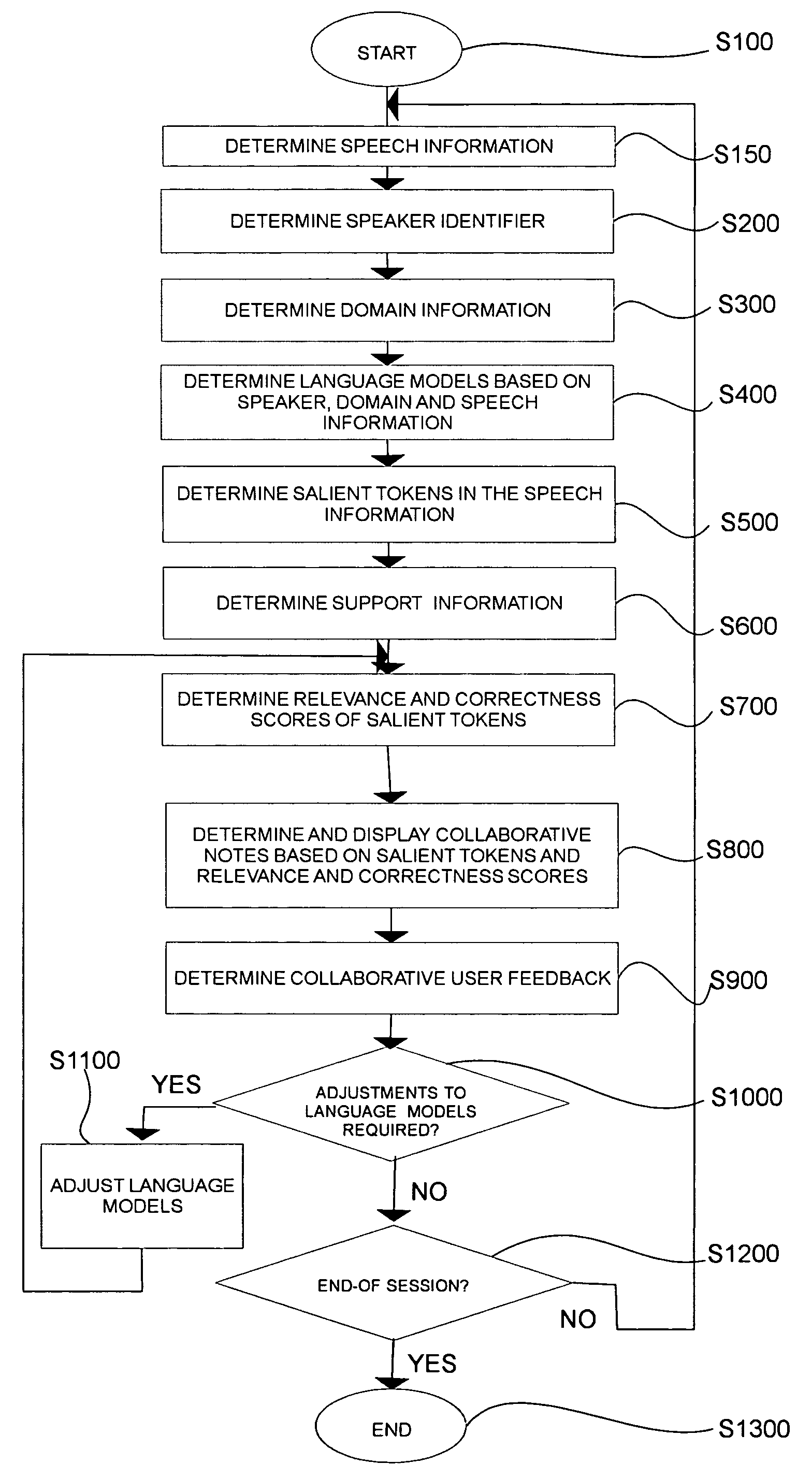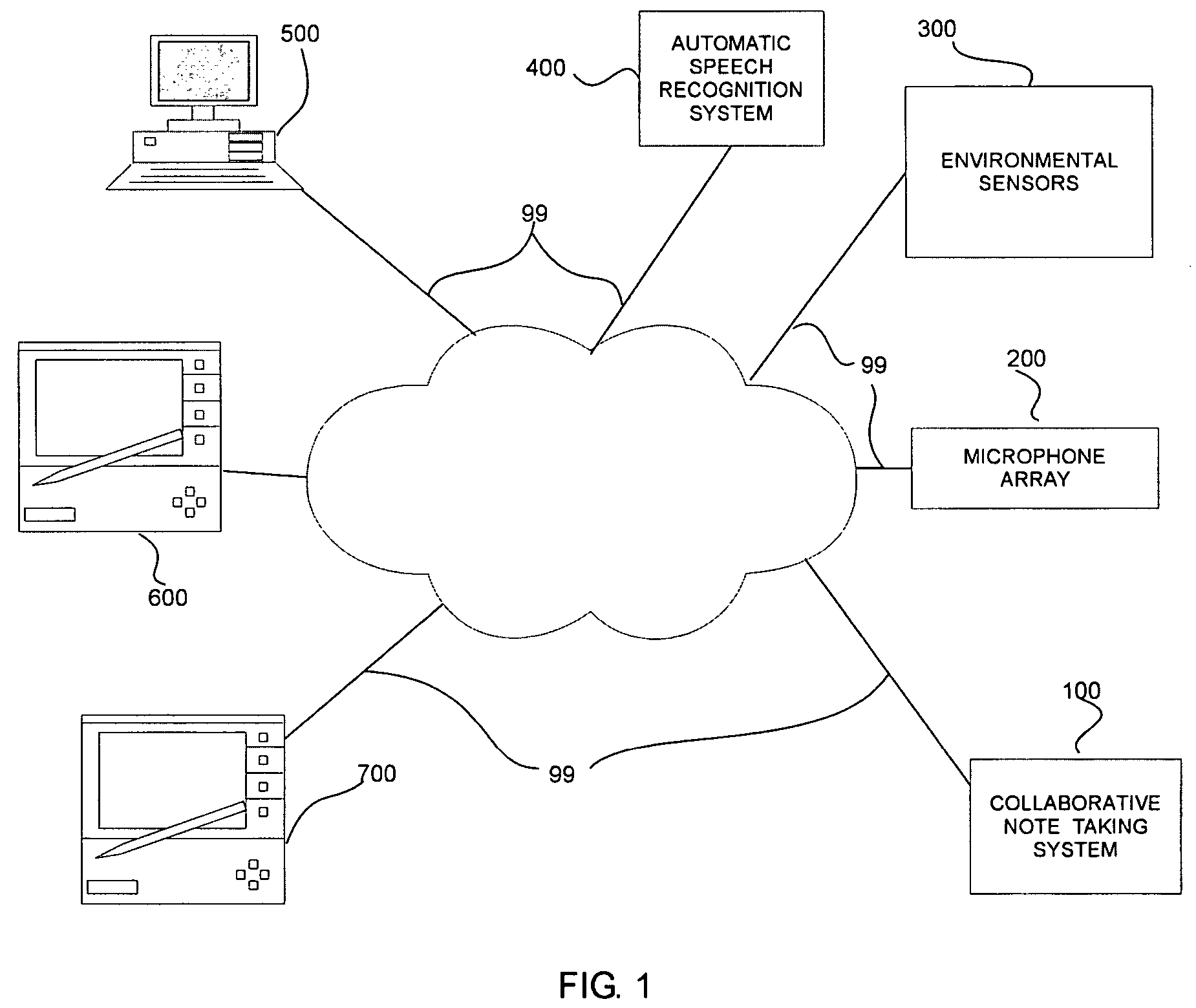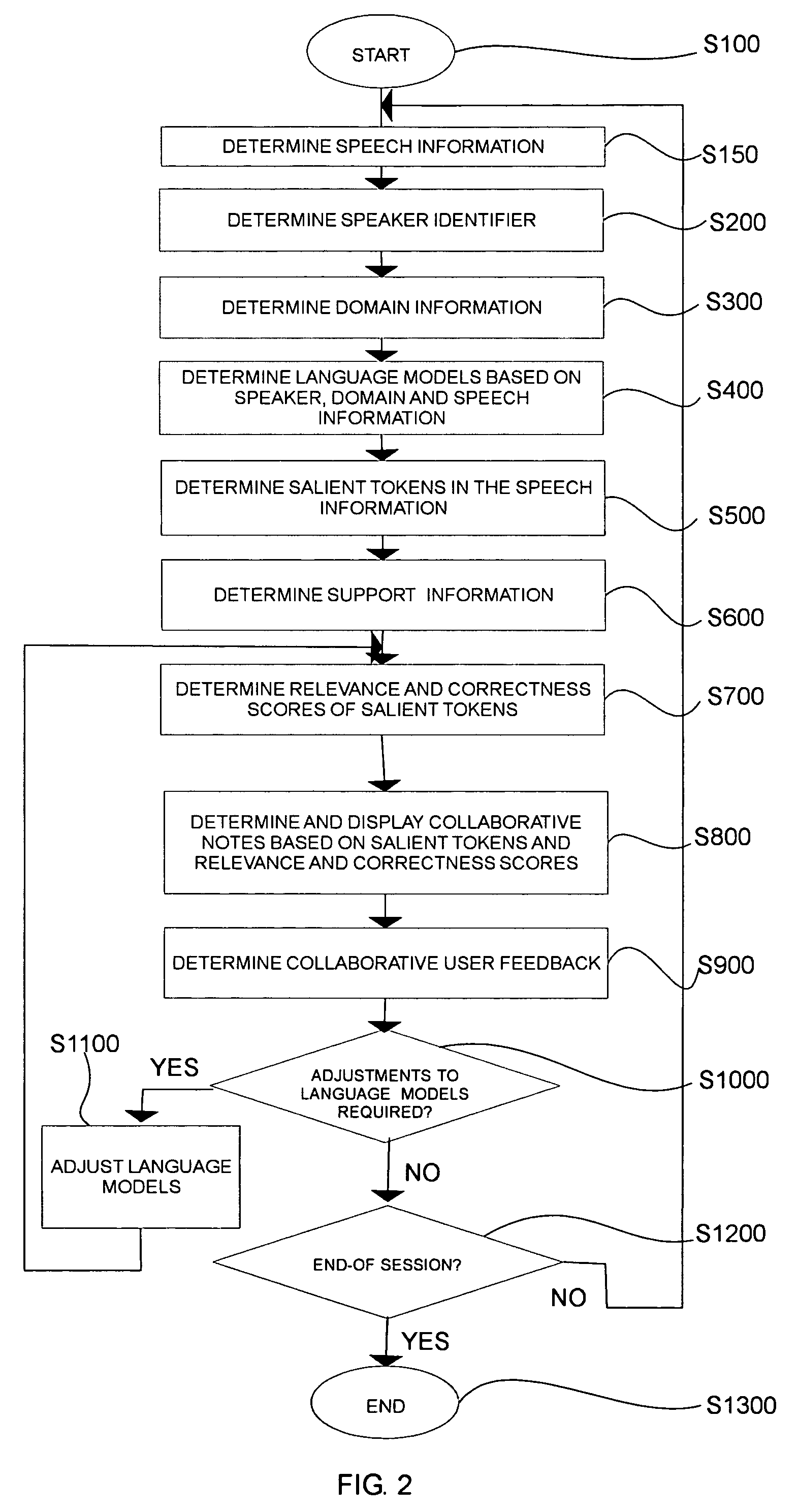Systems and methods for collaborative note-taking
a collaborative and feedback technology, applied in the field of collaborative note taking and collaborative feedback, can solve the problems of low accuracy of the conventional automatic speech recognition used in these systems, less detailed notes available, and large number of recognition errors
- Summary
- Abstract
- Description
- Claims
- Application Information
AI Technical Summary
Problems solved by technology
Method used
Image
Examples
Embodiment Construction
[0024]FIG. 1 is an overview of the use of an exemplary collaborative note-taking system 100 according to this invention. The microphone array 200; the environmental sensors 300; the automatic speech recognition system 400; a personal computer 500; a first tablet personal computer 600 and a second tablet personal computer 700 are all connected via communications link 99 to the collaborative note-taking system 100.
[0025]In one of the various exemplary embodiments according to this invention, the speaker presenting the class is identified. The speaker identifier may include but is not limited to the speaker's name, the speaker's employee number, or any other information capable of uniquely identifying the speaker and the speech information to the collaborative note-taking system. The speaker identifier is then used to optionally determine a speaker based language model for the automatic speech recognition system 400. The speaker based language model is used to compensate for idiosyncra...
PUM
 Login to View More
Login to View More Abstract
Description
Claims
Application Information
 Login to View More
Login to View More - R&D
- Intellectual Property
- Life Sciences
- Materials
- Tech Scout
- Unparalleled Data Quality
- Higher Quality Content
- 60% Fewer Hallucinations
Browse by: Latest US Patents, China's latest patents, Technical Efficacy Thesaurus, Application Domain, Technology Topic, Popular Technical Reports.
© 2025 PatSnap. All rights reserved.Legal|Privacy policy|Modern Slavery Act Transparency Statement|Sitemap|About US| Contact US: help@patsnap.com



